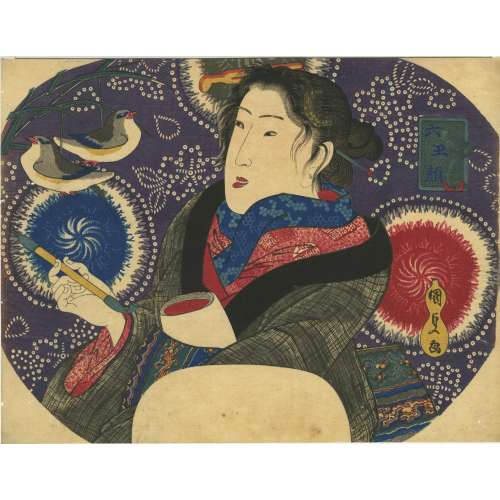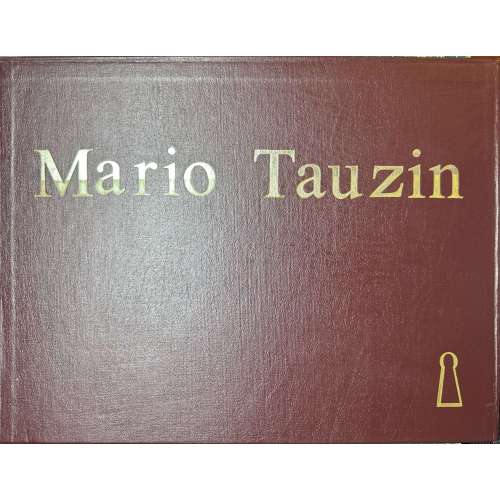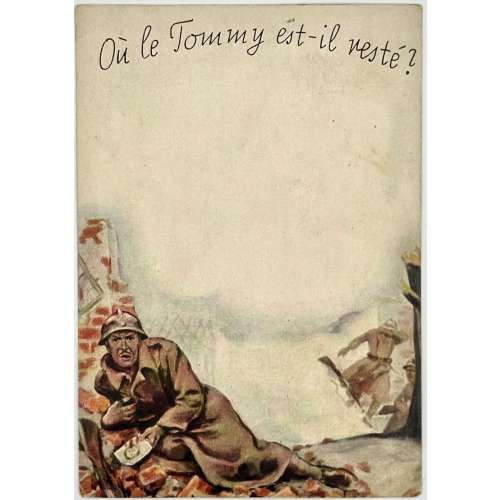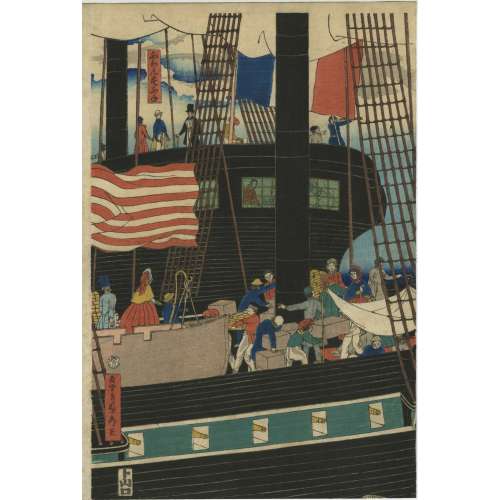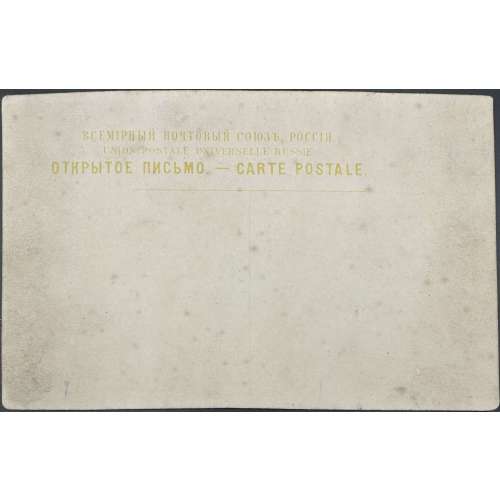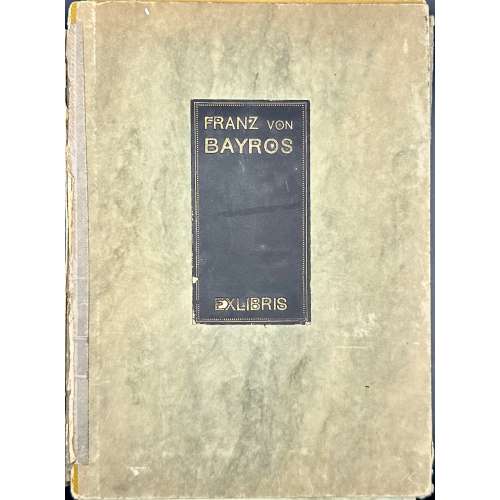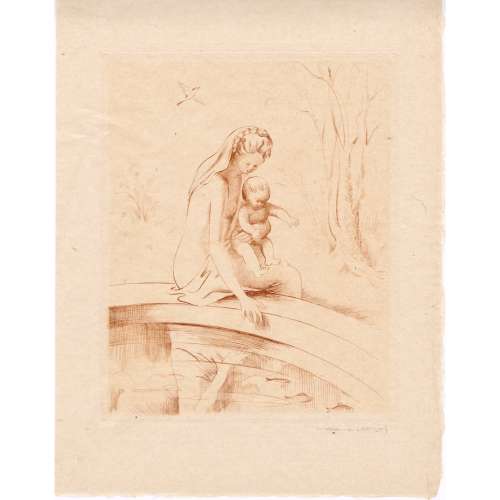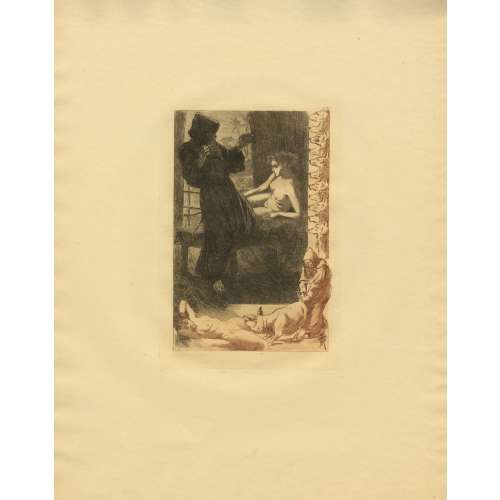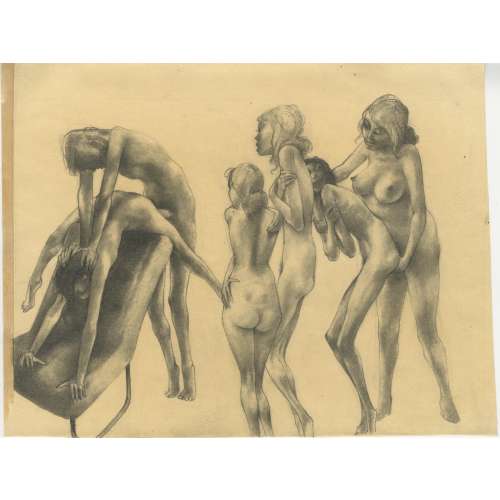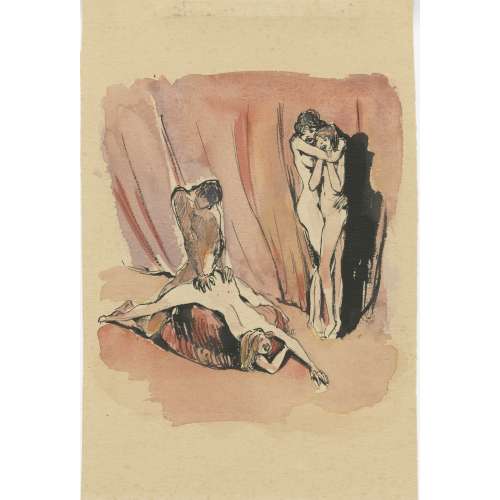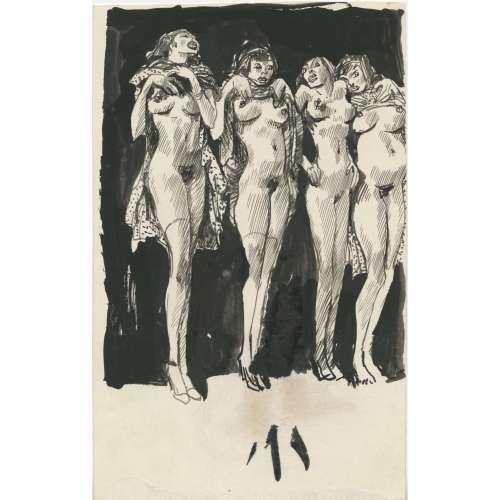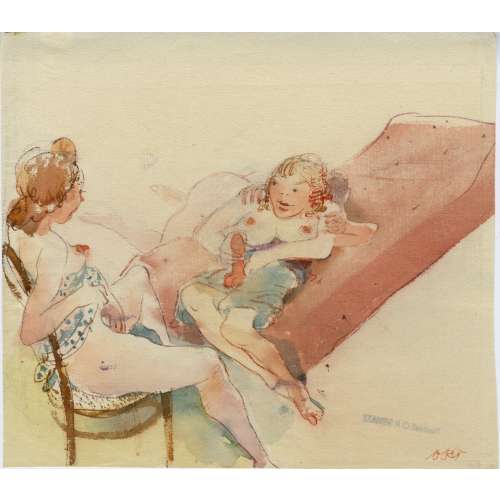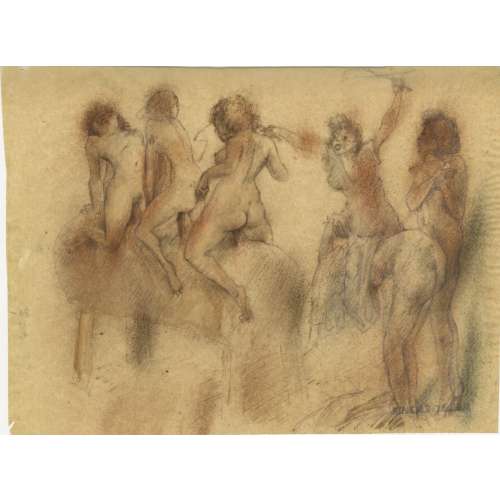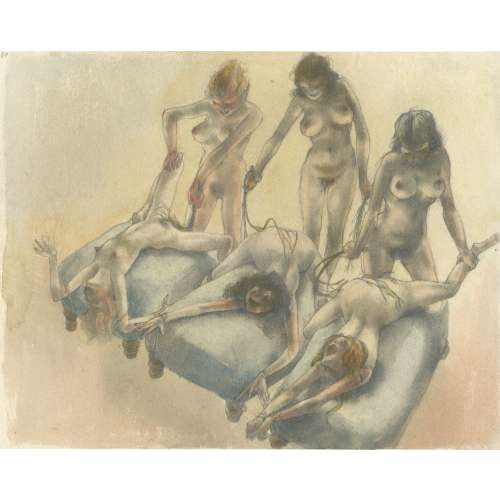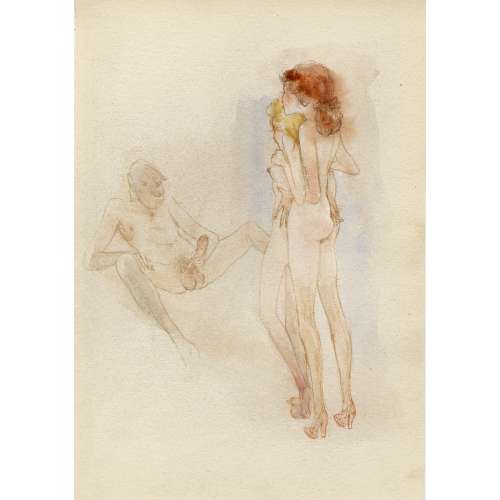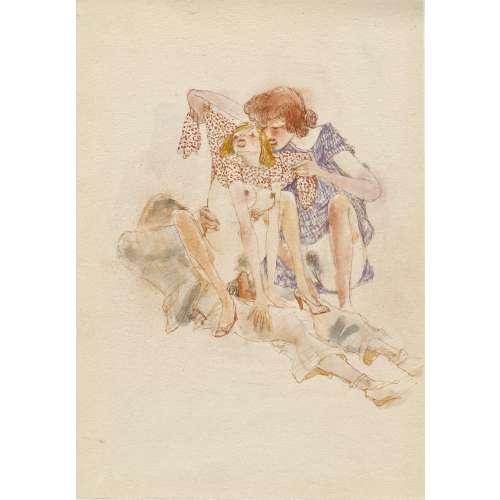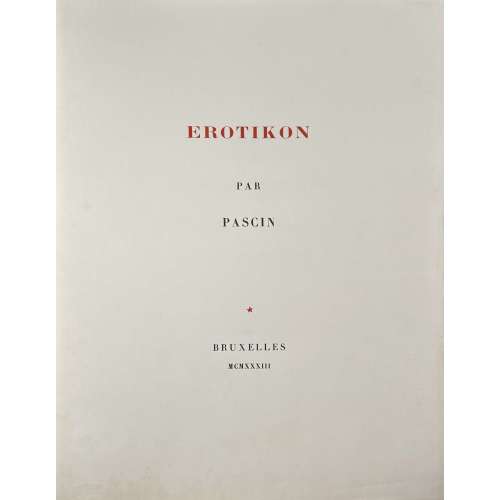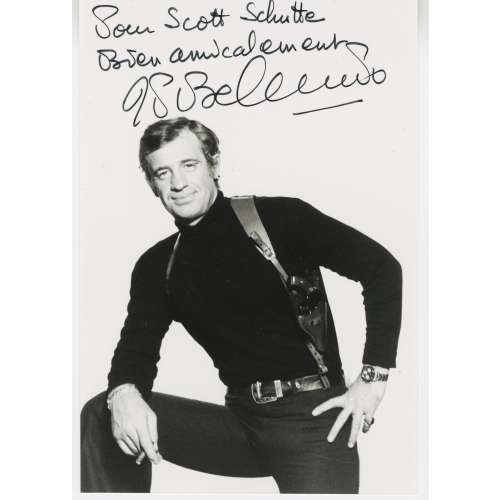Set of 10 etchings (9 in passe-partout) printed in sanguine on the mother of pearl paper (japon nacre) from the album of 12 prints titled “Jeunesse”, presented by Gérard D'Houville (pen name of Marie de Régnier, née de Heredia) and published by La Tradition in 1945. It was a limited edition of 532 copies, some coloured on Arches paper and some as these set. Plates signed by the artist in pencil below the plate mark. The album cover is missing.
Title-page:
JEUNESSE | 12 EAUX-FORTES ORIGINALES | DE |
MARIANNE CLOUZOT | PRÉSENTÉES | PAR | GÉRARD D'HOUVILLE | {
publisher’s device} | LA TRADITION | 1945 ||
Dimensions: mat 330 x 255 mm; window 225 x 180 mm; sheet 280 x 220 mm; plate 220 x 170 mm.
Contributors:
Marianne Clouzot (French, 1908 – 2007) – artist
Marie de Régnier [Marie de Heredia, Gérard d'Houville] (French, 1875 – 1963) – editor
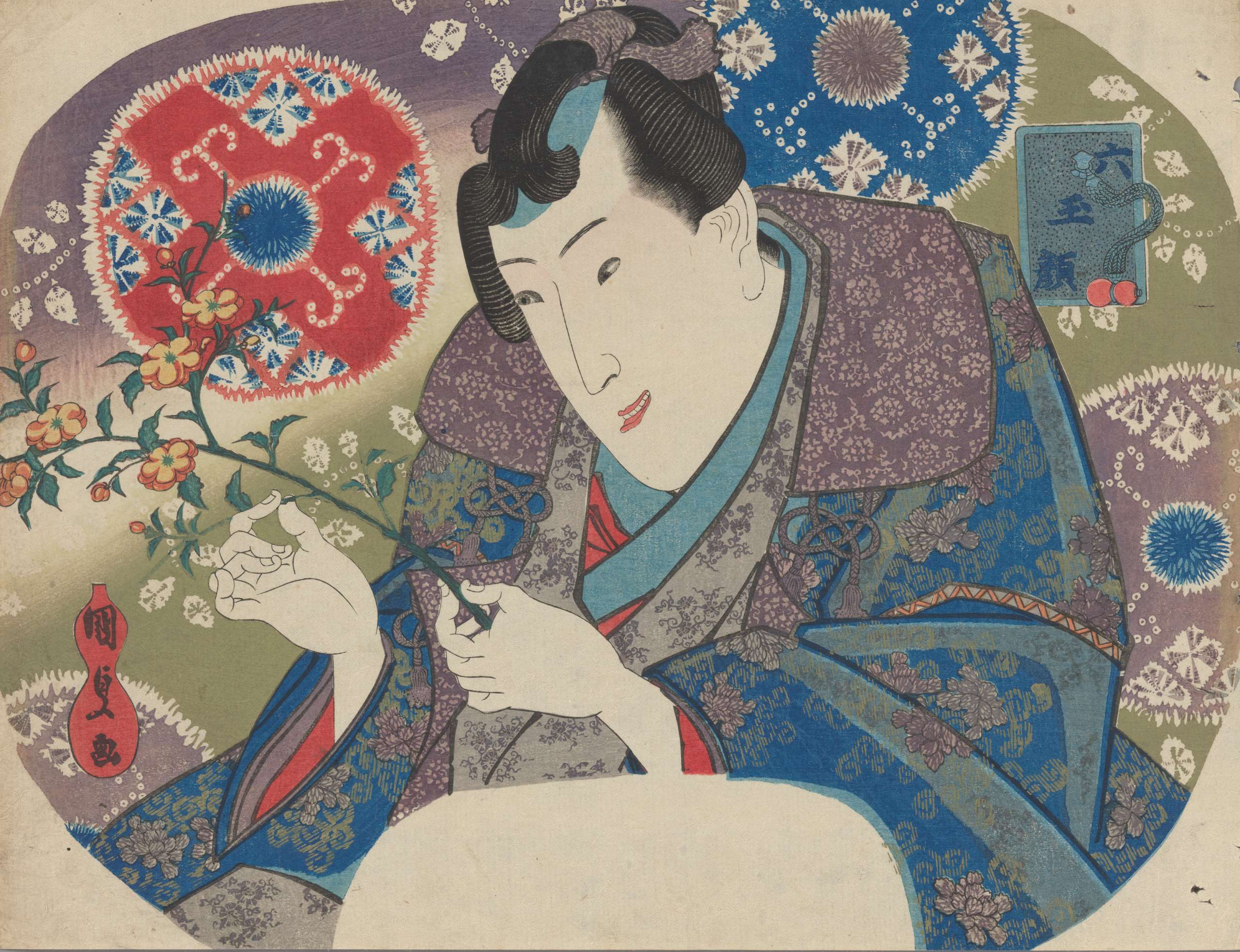 Mitsuuji with Mountain Roses (Yamabuki), from the series “Six Jewel Faces” (Mu tama-gao).
MET Accession Number:2019.3
Ref.: [LIB-2967.2022] Utagawa Kunisada: His world revisited / Catalogue 17, Exhibition March 17-21, 2021. — NY: Sebastian Izzard, LLC., 2021.
Mitsuuji with Mountain Roses (Yamabuki), from the series “Six Jewel Faces” (Mu tama-gao).
MET Accession Number:2019.3
Ref.: [LIB-2967.2022] Utagawa Kunisada: His world revisited / Catalogue 17, Exhibition March 17-21, 2021. — NY: Sebastian Izzard, LLC., 2021. 

